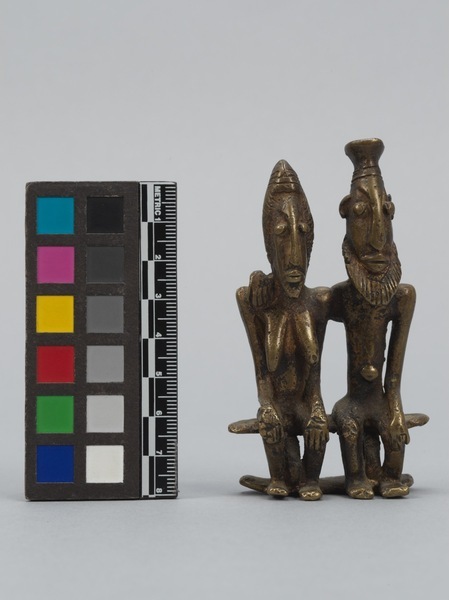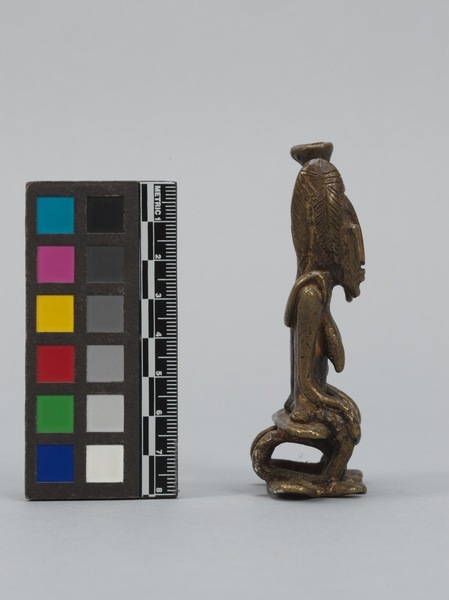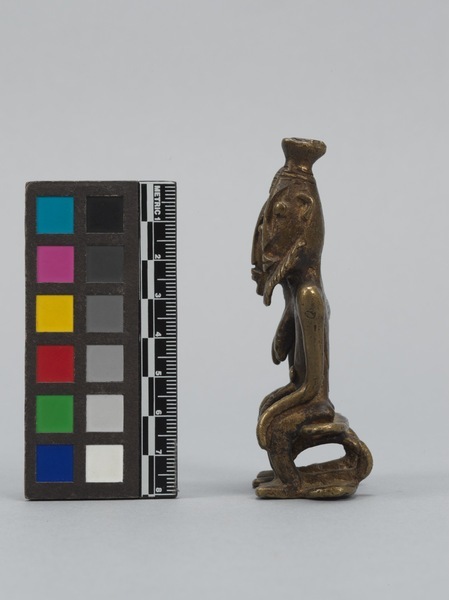Gold Weight Item Number: 3573/2 from the MOA: University of British Columbia




Description
Bronze sitting couple. A man and woman sit side by side on a bench. Both figures have long, oblong heads. The male wears a small hat on top of his head, and has a flat beard that extends out from his chin. The man rests his right hand and on the woman's right shoulder, and the remaining hands are all rested on their knees. The woman is bare breasted and has her hair back or wears a headdress.
History Of Use
Gold weights were historically made and used by the Akan peoples to weigh powdered gold ('gold dust'), which was used as the standard currency from the seventeenth to mid-nineteenth centuries. Locally referred to as abrammuo (singular mrammuo), they were usually made of a brass alloy and were based on the Islamic weight system. Each form had a known measurement, and those engaging in trade at that time would own a full set of weights. The pieces were cast using the lost-wax technique, ranging in form from simple geometric designs (thought to be the earliest forms) to figurative forms such as animals and humans, or items such as swords and Adinkra symbols.
Narrative
Purchased by the donor in San Francisco, c. 1987.
Item History
- Made in Ghana
- Collected in San Francisco, California, USA during 1987
- Owned by Max Diaz before May 26, 2022
- Received from Max Diaz (Donor) on May 26, 2022
What
- Name
- Gold Weight
- Identification Number
- 3573/2
- Type of Item
- weight
- Material
- brass metal
- Overall
- height 9.1 cm, width 5.5 cm, depth 3.2 cm
Where
- Holding Institution
- MOA: University of British Columbia
- Made in
- Ghana
- Collected in
- San Francisco, California, USA
When
- Collection Date
- during 1987
- Ownership Date
- before May 26, 2022
- Acquisition Date
- on May 26, 2022
Other
- Item Classes
- metalwork
- Condition
- good
- Accession Number
- 3573/0002